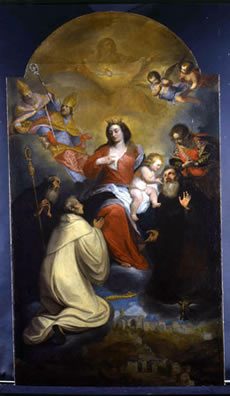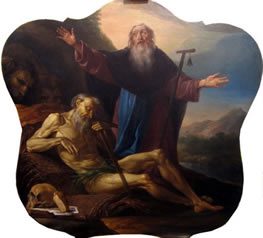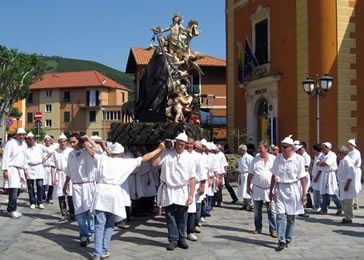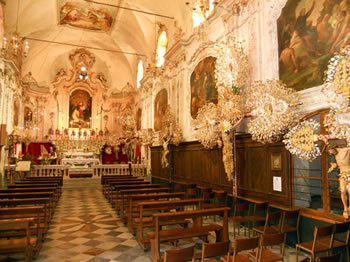Maria Serratto-Benvenuto
Riccardo Benvenuto
Chicago, Illinois, United States

In 1960 a girl was born in the small commune of Mele, some 25 miles from Genoa. She had a heart murmur and her skin was blue. The doctors in Italy declared her condition inoperable, and according to the practice of the time she was confined to her bed. She grew up stunted and unable to walk.
Sometime later, we read about her case in an Italian newspaper to which we were subscribing. Being specialized in cardiovascular surgery (Riccardo Benvenuto) and pediatric cardiology (Maria Serratto-Benvenuto), we felt a duty to provide service to this commune near our hometown of Genoa. After contacting the child’s father we organized a group of Italo-American citizens and companies to subsidize the air travel of the girl and her family to Chicago so that we could take care of her in our capacity. We obtained support from Grant Hospital and the Cook County Hospital of Chicago, from Alitalia airlines, and from the Drake Hotel—the city’s oldest and most prestigious hotel. Thanks to their generosity the entire family was able to come to Chicago and stay for five weeks.
During that time the girl underwent many tests. She was found to have transposition of the great arteries. In this condition the two large vessels that carry blood away from the heart are switched around. As a result the blood from the right side of the heart receives oxygen from the lungs but is returned to the same right side of the heart and not to the body. Blood from the left side is sent to the body without being oxygenated. Survival is only possible if an additional heart defect allows some oxygenated blood to reach the circulation. The girl’s condition was found to be inoperable. But with appropriate medical treatment her cardiovascular status improved and with physiotherapy she became able to walk. She lived until the age of 39, after a productive life that allowed her to maintain gainful employment and enjoy the love of her parents, relatives, and friends.

The community and municipality of Mele expressed their gratitude for our efforts by holding a reception in our honor with the elders, and the authorities of the village thanked us for the help we offered to one of their citizens. After our visit, we remained in touch with the girl’s father, who kept us abreast of the events of Mele. This is a small community of 2,700 inhabitants, nestled in the hills west of Genoa. The village’s original name was Miele (meaning honey), as this was the main source of income for the community. The name was changed in Mele when the main source of income became a paper mill producing high quality hand-made paper that was sold in Italy and Europe. At the time of the Industrial Revolution, the importance of the Mele paper-mill decreased because cheaper paper was made in large quantities by machines. Despite this economic decline, the community remained a cradle of artistic inspiration and activities centering on the Oratorio di Sant’Antonio Abate. The Oratorio, a small church now supported by the community and not by the Catholic Central Authority, was built during the 18th century and is considered to be one of the most representative examples of the Italian Baroque period. Unfortunately, because of the limited financial capabilities of the municipality of Mele and of the lack of support by the regional authority, the building could not be properly maintained. It slowly deteriorated, imperiling the magnificent interior containing irreplaceable frescoes, paintings by Giovanni Andrea Ansaldo (Fig. 1), Carlo Giuseppe Ratti (1737–1795), a Genovese late baroque painter and art biographer (Fig. 2), and wood sculptures by Anton Maria Maragliano, a renowned Genovese sculptor (Fig. 3). Additionally, the Oratorio contains three “processional” wooden crucifixes covered in silver and gold (Fig. 4).
During our visit to Italy in 2010 we were invited by the patient’s father to the Christmas concert held at the Oratorio. The music was beautiful, surpassed only by the magnificence of the building itself. We admired the paintings, the frescoes, the sculptures, and the crucifixes. We also noticed the advanced state of deterioration on the Oratorio ceiling, allowing rain water to seep through and threatening the integrity of the art treasures. We were impressed that this small community maintained such a magnificent cultural and religious monument; but it was clear they lacked the funds for keeping up the structure. We were deeply moved and decided we had to provide the means to preserve this magnificent example of Baroque art that was also the unifying force and spiritual center of the community.


After the concert we contacted the mayor of the city, Ms. Clio Benedetta Ferrando, and the municipal council member for arts and culture, Mr. Ignazio Galella, and Mr. Grillo President of the Oratorio Confraternita expressing our wish to sustain the expenses for proper maintenance of the Oratorio. We decided to create a foundation that would continue after our death, to preserve this magnificent example of Italian Baroque. Preserving this magnificent monument to culture, art, and beauty has been a gratifying experience, and we are privileged to have known this wonderful community of Mele. We were moved by the generous response to our gesture by the Mele community, which decided to confer honorary citizenship to both of us.
MARIA SERRATTO-BENVENUTO, MD, was born and educated in Genoa, Italy, and came to Chicago in 1957. Dr. Serratto specialized in pediatric cardiology, becoming a full professor at the University of Illinois and director of cardiac catheterization of the Cook County Hospital. She has been a representative of the United States at the Heart International School of Bergamo; visiting professor at the University of Palermo; consultant to the Cardio-Thoracic Center of Monte-Carlo; fellow of many societies; author of more than 160 scientific publications; named “motu proprio” by the President of the Italian Republic, “Grand Officer of the Order of the Italian Republic Solidarity”; and founder of a specialization course in pediatric cardiology that every two years attracts residents from all over the world.
RICCARDO BENVENUTO, MD, was born and educated in Genoa, Italy, and came to Chicago in 1957. Dr. Riccardo Benvenuto obtained his training in general and cardiovascular surgery at the Brompton and Italian Hospitals in London and at Northwestern Medical School in Chicago, practiced at Northwestern and Grant Hospitals, becoming director of the specialization course in surgery at Grant Hospital, professor of thoracic surgery at the University of Genoa, Knight of the Italian Republic, and member of many surgical societies. In 1960 he married Dr. Maria Serratto. The couple resides in Chicago but maintains a residence in Genoa and visits each year during November and December.
Highlighted in Frontispiece Volume 5, Issue 2 – Spring 2013

Leave a Reply